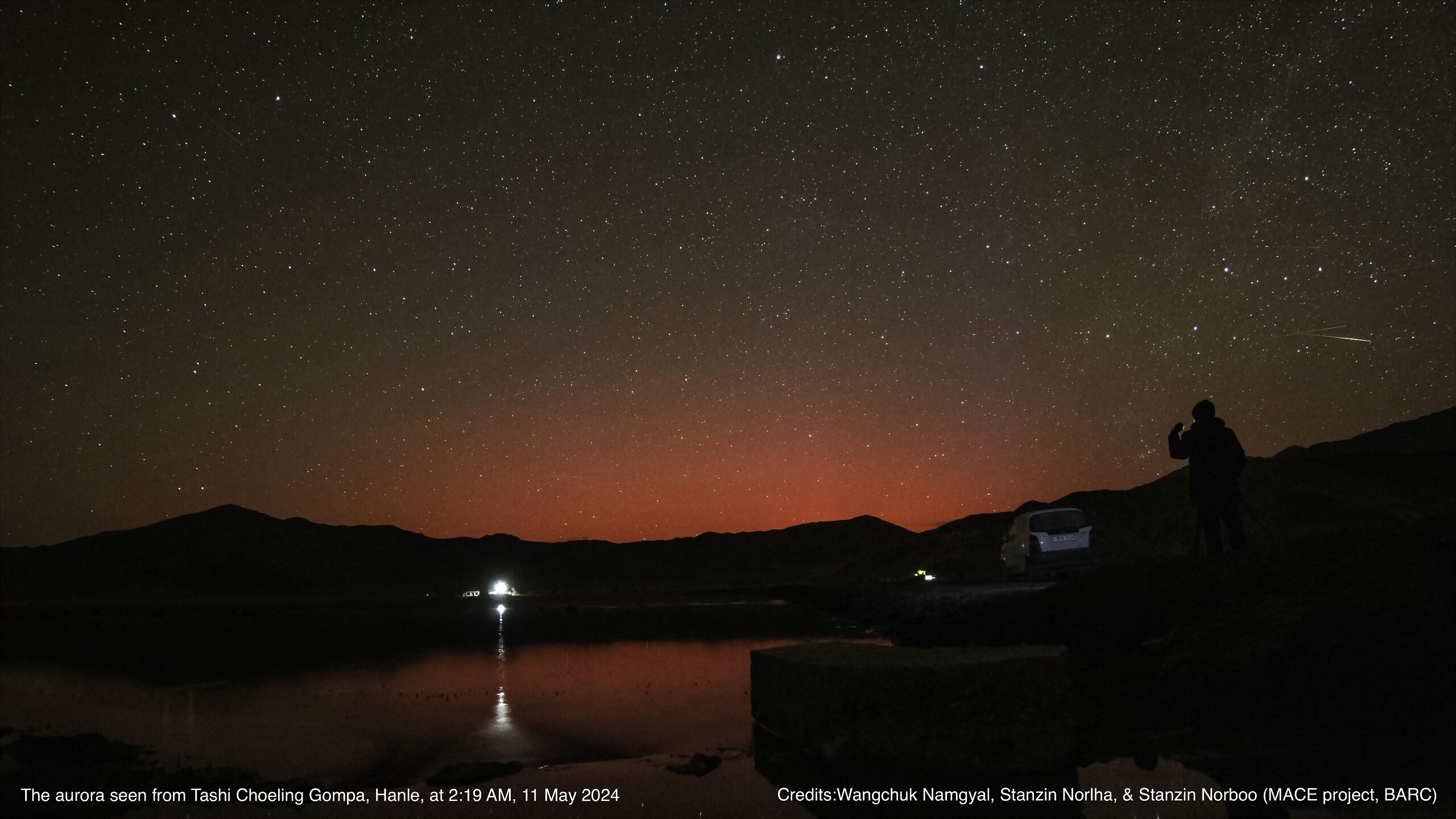
views
The Indian Astronomical Observatory in Hanle and Merak in Ladakh captured a stunning display of intense auroral activity on the night of May 10-11, triggered by intense geomagnetic storms from the Sun impacting the Earth.
These storms arise from the Coronal Mass Ejections (CMEs), which are basically large amounts of plasma and magnetic fields ejected from the Sun’s atmosphere – the corona. These storms can take a few hours or even days to reach the Earth. The current strong aurora was predicted, and was seen from across the globe.
HOW AURORAS ARE FORMED?
Auroras are brilliant ribbons of light which form in the sky when the Earth’s magnetic field is disturbed by the incoming solar wind that carries charged particles and magnetic fields with itself. It is particularly more intense when intense ‘geo-effective’ solar storms hit the Earth. In general, the aurorae are seen from higher latitudes, and therefore not seen from India. However, when the solar storms are extremely strong, then countries at lower latitudes can also get to see them.
Scientists say that the recent set of storms were so strong that the disturbances could be witnessed from India at Ladakh. At least four such solar storms reached the Earth between May 10 and 11, which gave rise to extraordinary aurora across the world. The images were captured by the observatories at Hanle and Merak which have all-sky Cameras that image the entire sky constantly. It is run by the Indian Institute of Astrophysics (IIA), Bengaluru.

“The red auroral light could be captured by our Hanle camera towards the northern horizon from half-past midnight till about morning twilight, and peaked around 2 AM,” said Dorje Angchuk, the Engineer-in-Charge of the Observatory at Hanle. A similar camera at Merak, on the banks of Pangong Tso, which is the proposed site of the National Large Solar Telescope, also captured the aurora.
Apart from intense red colour caused by energetic particles in the upper atmosphere, blue and violet coloured bands were also seen, which are due to particles that extend even lower into our atmosphere. “Astronomers at IIA study the Sun, coronal mass ejections and the space weather. It is not very often that we see aurorae at Hanle latitudes – we look forward to observing many more such aurorae from Ladakh during this solar cycle,” said Professor Annapurni Subramaniam, Director of IIA.
INTENSE SOLAR STORMS IMPACT EARTH
According to scientists, the display was caused by as many super-strong Coronal Mass Ejections (CMEs) that were launched from the Sun between May 8 and 9, which were directed towards the Earth. The Earth’s magnetic field has been disturbed for several hours now, and the intensity peaked on May 11.
The last such intense storm occurred in November 2003. Extreme geomagnetic storms have the potential to harm space-technology dependent human life on Earth, such as disrupting radio communication as well as GPS signals. Scientists have been working hard to develop capabilities to predict such storms in the near-future.

These CMEs travelled toward the Earth and reached the Earth on May 10-11 with a speed of around 700 km/s. The shock driven by these storms reached Earth on 10 May at 22:22 IST with a speed of around 815 km/s. The flares were also observed in the optical waveband at IIA’s Kodaikanal Solar Observatory and Merak, and in the radio waveband at the Gauribidanur Radio Observatory and Kodaikanal.
“These four CMEs were also observed by the NASA’s SOHO/LASCO spacecraft on 8 May with the speed of around 500 km/s, on 9 May with speed of 500 km/s, on 9 May with speed as high as 1900 km/s, and the fourth on 10 May with speed of 1200 km/s,” said Wageesh Mishra, a solar astronomer at IIA.
Stable Auroral Red arcs were photographed from Hanle and Merak during a previous solar storm on the night of November 5-6 last year too. “The Hanle Dark Sky Reserve and surrounding regions, with its high altitude and dark skies, is an excellent location to see aurora from such intense storms which are visible even at such low latitudes,” said Niruj Mohan Ramanujam from IIA, Bengaluru.
Explore the detailed schedule and key constituencies of the 2024 Lok Sabha Election’s Fourth Phase

















Comments
0 comment